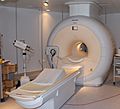Hypostatic model of personality facts for kids

The hypostatic model of personality is a way of understanding the many different parts of a person's character. Imagine a person isn't just one simple thing, but like a set of Matryoshka dolls, with many layers inside. This model suggests that how you act and how others see you can change a lot. It depends on who you are with, what situation you are in, and even how others choose to look at you.
For example, you might be quiet and shy in class, but loud and funny with your best friends. This doesn't mean you are faking it; it means you have different sides to your personality. The model helps scientists understand these different "sides" so they can help people grow and improve.
Contents
Understanding Your Personality
What is Personality?
Your personality is what makes you, well, you! It's the mix of your thoughts, feelings, and behaviors that are usually stable over time. It's how you react to things, how you interact with others, and what makes you unique. Think of it as your personal style or your usual way of being.
Why Do We Have Many Sides?
The hypostatic model explains that people are not just one simple thing. We are a mix of many different qualities. For instance, someone might be very serious when working on a school project, but then become super silly when playing a game with friends. This is normal! Our personality can show different "faces" depending on the situation.
How Situations Change Us
Sometimes, a situation can bring out a different side of you. Imagine a very shy person who suddenly becomes brave to help someone in trouble. The model says that even the most timid person can become a hero if they are called to save a life. This shows that our actions are not just about who we are, but also about what is happening around us.
How Others See Us
How others see you can also affect which "side" of your personality comes out. If someone expects you to be funny, you might try to be more humorous. If they expect you to be serious, you might act more thoughtfully. This doesn't mean you're pretending, but that you're responding to the social situation.
Personality and Growth
Learning About Ourselves
Scientists and psychologists study these different sides of personality. They want to understand why people act the way they do in different situations. By learning about these "hypostases" (the different parts or aspects of a person), they can help people understand themselves better.
Growing and Improving
Understanding your different personality sides can help you grow. If you know that you can be shy in new groups but confident with close friends, you can work on building confidence in new situations. The goal is to help people use all their different qualities in positive ways. It's about becoming the best version of yourself, no matter the situation.
Images for kids
-
Matryoshka dolls provide a visual representation of the multiplicity and complexity of personality.
-
Different brain structures involved in the recognition of a word, and in the recognition of an emotional expression (functional MRI).
-
A domino's movement is determined completely by laws of physics. Even if people are similar to dominoes, they can have a form of free will.
See also
 In Spanish: Modelo hipostático de la personalidad para niños
In Spanish: Modelo hipostático de la personalidad para niños





























